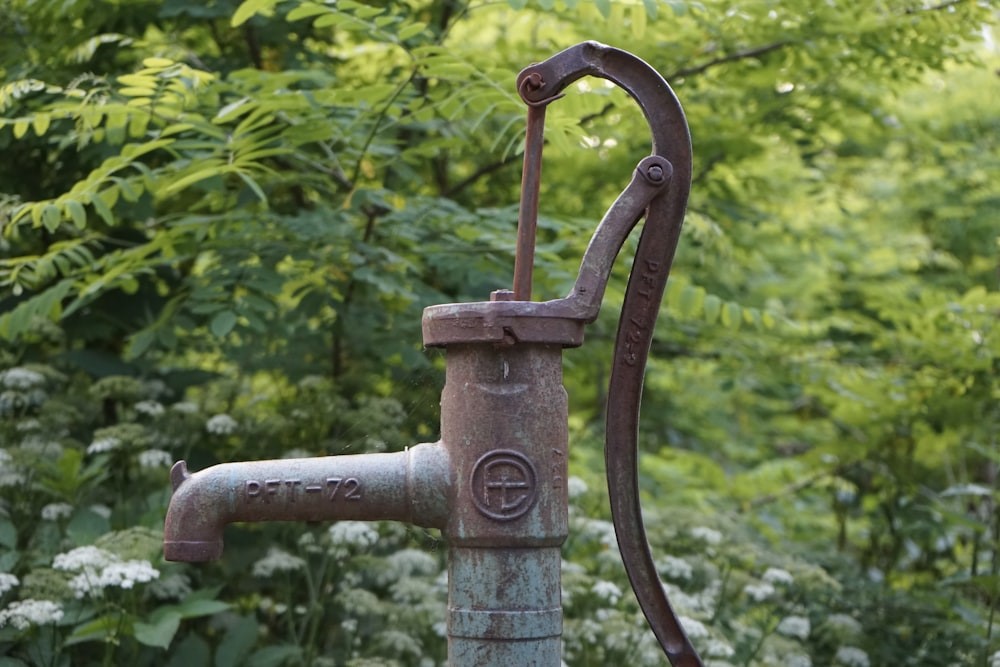EcoPerspectives Blog
Well, Well, Well, Well, How the Water Tables: How Recent Court Decisions Have Replenished Hope for Dwindling Aquifers in the West
By Elle Elliot, Staff Editor for the Vermont Journal of Environmental Law
May 3, 2024

I. Introduction
The western United States is facing a severe groundwater crisis that poses significant threats to the region’s water resources and ecosystems. Groundwater depletion is leading to declining water tables, the lowering of lakes and drying of perennial streams, and land subsidence. Groundwater depletion is primarily caused by excessive extraction for agricultural irrigation. As the demand for water increases to meet the needs of a growing population, groundwater resources are being tapped at unsustainable rates across the West. However, the Idaho, Nevada, and Montana judiciaries have recently pushed back against unchecked groundwater withdrawals in landmark state supreme court decisions.
II. Groundwater Depletion Threatens Existing Resources
A. How Is Groundwater Generally Regulated?
Groundwater is regulated separately from surface water in the United States. Despite the undeniable scientific connection between groundwater and surface water, legally groundwater regulations exist apart from surface water regulations. While there are some federal laws that extend protection to groundwater—like the Federal Safe Drinking Water Act, Toxic Substances Control Act, and Resource Conservation and Recovery Act, to name a few—generally, individual states maintain control over how groundwater is allocated within their respective borders.
Many western states—like Idaho, Montana, and Nevada—rely on a water allocation system that combines the doctrine of prior appropriation (“first in time, first in right”) with the beneficial use doctrine (“use it or lose it”). This essentially means the first person to appropriate water from a resource has an undisputed right to the resource, so long as the water use has purpose. Subsequent appropriators may also draw from the water source, but their use cannot interfere with the use of those people holding senior water rights. Idaho, Nevada, and Montana follow the doctrine of prior appropriation.
B. Groundwater Depletion is a Threat to the West’s Way of Life
The western United States is home to some of the most productive agricultural regions in the nation. Groundwater has been a critical resource for irrigating crops and sustaining the region’s agricultural economy. However, decades of over-extraction of groundwater have led to a steady decline in water tables. In some areas, groundwater levels have dropped by hundreds of feet, leaving many wells dry. Moreover, groundwater depletion has a devastating impact on agriculture. As groundwater levels drop at an alarming rate, farmers may find it increasingly difficult to irrigate their crops, leading to reduced yields and increased food insecurity. This, in turn, can have a ripple effect on the economy and the livelihoods of millions of people.
Though the groundwater crisis is a serious threat to the region’s water security, there are still many people who oppose any sort of government regulation restricting pumping for agriculture and industry purposes. From Kansas to Nevada, California to Montana, farmers, miners, and real estate developers continue lobbying for relaxed pumping standards as applied to their respective industries and block key legislation imposing limits on groundwater usage. Despite data urging immediate protection of this invaluable resource that may be irreplaceable–at least, irreplaceable within our lifetime–industry opposition remains steadfast. Control, at least in several western states, remains firmly in the hands of agribusiness and mining operations.
III. Courts Defend States’ Rights to Manage Aquifers
The future is not yet fixed: regaining protection for aquifers may rest on decisions of state supreme courts. A recent string of court decisions out of Idaho, Nevada, and Montana indicate that state judiciaries are beginning to push back against legislative indifference to the groundwater crisis. Since January 2024, courts from these respective states have irrevocably altered the landscape of aquifer conservation by ruling in favor of granting states with more power to regulate this resource.
A. Idaho
Early in January, the Idaho Supreme Court confirmed the power of state officials to limit, or even prohibit, groundwater drawing from wells in order to protect the state’s dwindling water supply. During a drought in Wood River Valley, a district court adjudicated water rights. The Director of the Idaho Department of Water Resources concluded that, due to the impact on senior water rights, the aquifer lacked sufficient water to satisfy junior water rights. In its decision, the Idaho Supreme Court found that the Director had the authority to initiate administrative proceedings and did not violate the prior appropriation doctrine.
The New York Times’ investigative team conducted a comprehensive research study, revealing that Idaho has been grappling with one of the most acute rates of groundwater depletion in the nation. This alarming trend largely stems from agricultural practices, which have become the cornerstone of the state’s economy. However, a significant shift in the water allocation paradigm may be on the horizon thanks to the landmark ruling issued by the Idaho Supreme Court in January of this year.
B. Nevada
On January 25th, 2024, in a dispute between real estate developers and state water agencies, the Nevada Supreme Court found in favor of the state agencies, ruling that Nevada’s government can manage groundwater for the public interest and the preservation of senior water rights. The court also held that the state could restrict new groundwater pumping if the pumping will impact other users and wildlife. Specifically, this decision reaffirms Nevada’s authority to change how groundwater is regulated, which includes the power to alter how basin boundary lines are drawn and managed.
Environmentalists herald the Nevada Supreme Court’s decision as a “win” for water law. For the first time in the state of Nevada, and in the Southwest, state regulators can consider surface water and groundwater as a unified resource. The Supreme Court’s ruling establishes the precedent that the state can take actions in regions confronting droughts and ecological challenges pertaining to water if the scientific evidence supports the decision. This development is a significant triumph, and environmental advocates and water suppliers contend that it will have a positive impact on the future of Nevada’s groundwater allocation.
C. Montana
Finally, in February 2024, a judge in Montana said “no” to further housing development in one of the state’s most water-stressed valleys. Like the case in Nevada, the lawsuit arose from tension between long-standing valley residents and real estate developers looking to build more housing. The ruling found that state officials failed to impose adequate limits on constructing new homes that rely on groundwater. The judgment rests at the heart of current public policy because it aims to strike a thoughtful balance between the requirement for adequate housing and the need to ensure sustainable water usage. Sustainable groundwater usage is essential for the health of ecosystems and human well-being.
IV. Conclusion
The consequences of groundwater depletion are numerous and severe. Declining water tables can result in the drying up of wells, reduction of water in streams and lakes. Over-pumping groundwater leads to bodies of water falling below the necessary depth that streamside or wetland vegetation need to survive. The overall effect is “the loss of riparian vegetation and wildlife habitat.” Excessive pumping of groundwater can also cause the land to subside as the underground water is withdrawn from its reserve, damaging infrastructure, disrupting transportation systems, and increasing the risk of flooding in the areas where the ground receded. In some cases, groundwater depletion can even lead to the formation of sinkholes.
With the recognition of the urgent need to address declining groundwater resources, state and federal governing entities may initiate the implementation of more stringent protective measures. Recent developments in Western states have provided an indication of the potential shift in policy. Notable court decisions in Nevada, Idaho, and Montana have significantly bolstered the authority of states to regulate excessive groundwater extraction, taking steps toward sustainable groundwater management in the West.

